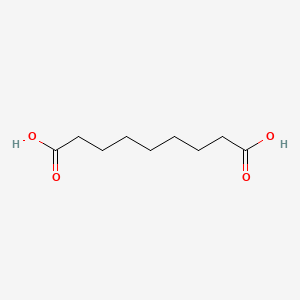
|
Azelaic acid |
Azelaic acid is a lipid of Fatty Acyls (FA) class. Azelaic acid is associated with abnormalities such as Bacterial Infections and Infection. The involved functions are known as Anabolism, Signal Transduction, Plant Immunity, Signal and Signal Transduction Pathways. Azelaic acid often locates in Body tissue. The associated genes with Azelaic acid are AZI1 gene, FKBPL gene and MLL gene. The related lipids are sebacic acid. |
783 |
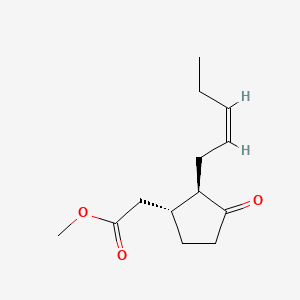
|
Methyl jasmonate |
Methyl jasmonate is a lipid of Fatty Acyls (FA) class. Methyl jasmonate is associated with abnormalities such as Infection, abnormal fragmented structure, Disintegration (morphologic abnormality), Parasitic Diseases and Contracture. The involved functions are known as Stimulus, Signal, Cell Death, Infiltration and Mutation. Methyl jasmonate often locates in Extracellular, Plasma membrane, Cytoplasm, Cell Wall and Body tissue. The associated genes with Methyl jasmonate are Polypeptides, Homologous Gene, NPR1 gene, systemin and Locus. The related lipids are Fatty Acids, Saponins and Oxylipins. |
2442 |

|
Prostaglandin E2 |
Prostaglandin E2 is a lipid of Fatty Acyls (FA) class. Prostaglandin e2 is associated with abnormalities such as Renal glomerular disease, Arthritis, Degenerative polyarthritis, Pancreatitis and Rheumatoid Arthritis. The involved functions are known as enzyme pathway, Atherogenesis, Anabolism, inhibitors and Oxidants. Prostaglandin e2 often locates in Tissue membrane, Blood, Extracellular, Membrane and Protoplasm. The associated genes with Prostaglandin E2 are PTGS2 gene, TP53 gene, TNFRSF5 gene, FASTK Gene and TNF gene. The related lipids are Lipopolysaccharides, Steroids, monooxyethylene trimethylolpropane tristearate, Fatty Acids, Unsaturated and Promega. The related experimental models are Arthritis, Adjuvant-Induced, Xenograft Model, Experimental Autoimmune Encephalomyelitis, Cancer Model and Knock-out. |
49278 |

|
PGD2 |
Pgd2 is a lipid of Fatty Acyls (FA) class. Pgd2 is associated with abnormalities such as Inflammatory disorder, Pleurisy, Rhinitis, Dehydration and Pneumonia. The involved functions are known as antagonists, fat cell differentiation, Phosphorylation, Process and Gene Expression. Pgd2 often locates in Cell surface, Body tissue, Extracellular, Bone Marrow and Membrane. The associated genes with PGD2 are oxytocin, 1-desamino-(O-Et-Tyr)(2)-, P4HTM gene, PTGS2 gene, PTGDS gene and IL3 gene. The related lipids are 15-deoxyprostaglandin J2, Nonesterified Fatty Acids, Lipopolysaccharides, Steroids and Liposomes. The related experimental models are Knock-out and Rodent Model. |
6464 |
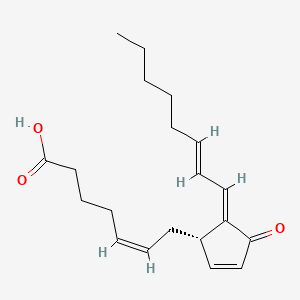
|
15-deoxy-delta-12,14-PGJ2 |
15-deoxy-delta-12,14-pgj2 is a lipid of Fatty Acyls (FA) class. 15-deoxy-delta-12,14-pgj2 is associated with abnormalities such as Dehydration and Myocardial Ischemia. The involved functions are known as Binding (Molecular Function), Inflammation, Alveolar ventilation function, Stimulus and Process. 15-deoxy-delta-12,14-pgj2 often locates in Cytosol, Myocardial tissue and Heart tissue. The associated genes with 15-deoxy-delta-12,14-PGJ2 are Homologous Gene and G-substrate. The related lipids are 15-deoxyprostaglandin J2 and Lipopolysaccharides. |
1201 |

|
11beta-PGF2 |
11beta-pgf2 is a lipid of Fatty Acyls (FA) class. |
15009 |
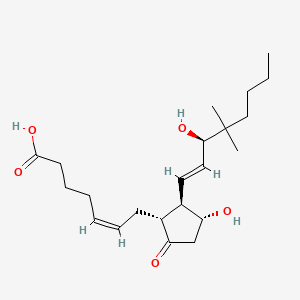
|
16,16-dimethyl-PGE2 |
16,16-dimethyl-pge2 is a lipid of Fatty Acyls (FA) class. |
785 |

|
Thromboxane b2 |
Thromboxane b2 is a lipid of Fatty Acyls (FA) class. Thromboxane b2 is associated with abnormalities such as endothelial dysfunction, Diabetes Mellitus, Non-Insulin-Dependent, Diabetes Mellitus, Ischemia and Thrombocytosis. The involved functions are known as Platelet Activation, Excretory function, Anabolism, Inflammation and mRNA Expression. Thromboxane b2 often locates in Endothelium, Hepatic and Microsomes, Liver. The associated genes with Thromboxane b2 are PTGS2 gene, prothrombin fragment 2 and CCL14 wt Allele. |
10175 |
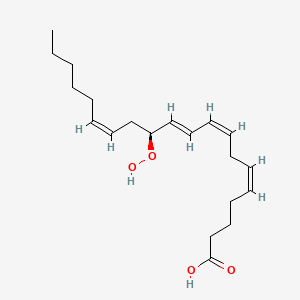
|
12S-HpETE |
12s-hpete is a lipid of Fatty Acyls (FA) class. |
211 |

|
4-hydroxynonenal |
4-hydroxynonenal is a lipid of Fatty Acyls (FA) class. 4-hydroxynonenal is associated with abnormalities such as Chronic disease, Obesity, Diabetes, Acquired Immunodeficiency Syndrome and Lung diseases. The involved functions are known as protein expression, Glycolysis, mRNA Expression, Regulation and Mitochondrion in division. 4-hydroxynonenal often locates in Muscle, Mitochondria, Adipose tissue, Head and Mouse Muscle. The associated genes with 4-hydroxynonenal are STAT3 gene, SIRT1 gene, PGC gene, IL6 gene and cytochrome c''. The related lipids are Lipopolysaccharides, Lipid Peroxides, Promega, Membrane Lipids and oxidized lipid. The related experimental models are Mouse Model, Knock-out, Transgenic Model, Disease model and Rodent Model. |
5685 |









